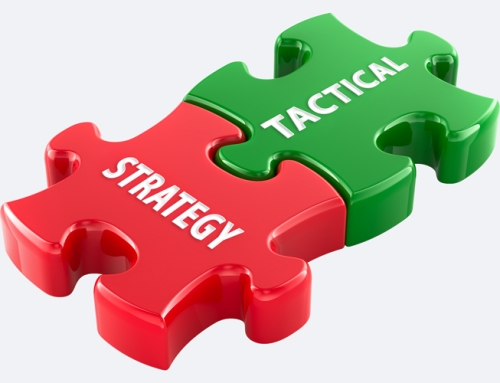A Strategic Blueprint isn’t just theory—it delivers real, measurable results. However, developing an effective blueprint requires more than internal discussions and assumptions. Often, companies are too close to their own challenges to see blind spots or uncover new opportunities. An objective, outsider perspective brings fresh insights, identifies inefficiencies, and ensures strategic plans are built on data and market realities rather than internal biases.
For example, a mid-sized industrial equipment manufacturer struggled with market expansion due to misalignment between sales and marketing. Buckaroo, as an external partner, brought a clear, unbiased perspective and developed a customized blueprint that streamlined operations, aligned teams, and optimized their go-to-market strategy. Within six months, they saw a 20% increase in their sales pipeline and a 30% reduction in wasted marketing spend by focusing on high-impact channels. With a clear roadmap in place, the company now operates with greater efficiency, alignment, and confidence, ensuring every initiative drives sustainable growth.
Their success underscores a fundamental truth: success in B2B manufacturing doesn’t happen by chance. It requires a clear, structured plan that aligns business objectives with market realities. A Strategic Blueprint serves as that guiding framework, detailing the key initiatives, priorities, and execution steps necessary for sustained growth. Without a well-defined playbook, companies risk inefficiency, misalignment, and missed opportunities.
A strategic blueprint provides clarity and direction, ensuring that every aspect of sales, marketing, operations, and customer engagement is working toward the same goals. It translates high-level business strategy into actionable steps, eliminating guesswork and providing a structured path to execution. This not only streamlines decision-making but also keeps teams focused on the right priorities, reducing wasted efforts and misallocated resources.
One of the key benefits of a strategic blueprint is alignment — across teams, departments, and leadership. Without a documented plan, different parts of an organization may operate in silos, each pursuing their own objectives without coordination. A well-developed blueprint ensures that sales, marketing, and operations are synchronized, creating a seamless customer experience, and driving business growth in a unified direction.
Additionally, a strategic blueprint enhances accountability. By outlining specific goals, key performance indicators, and responsibilities, it establishes clear expectations for teams and individuals. This helps drive execution, improve performance tracking, and ensure that initiatives stay on schedule and within budget. When challenges arise, a detailed playbook provides a structured approach for identifying issues, adjusting strategies, and keeping the organization on track.
In today’s competitive environment, agility is essential. A strategic blueprint is not a static document but a living guide that adapts to changing market conditions. As industry trends, customer preferences, and competitive landscapes shift, companies need a roadmap that allows them to pivot effectively without losing sight of their long-term objectives.
Ultimately, a strategic blueprint is the foundation for scalable, repeatable success. It transforms vision into execution, ensuring that every initiative contributes to growth, efficiency, and competitive advantage. Companies that invest in a structured, insight-driven playbook position themselves for long-term resilience, while those operating without one risk inefficiencies, inconsistencies, and lost market share.






